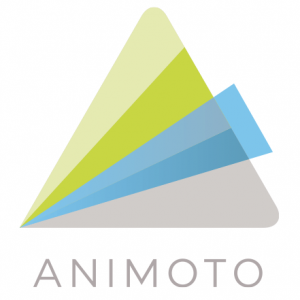
So, you’re holding an event and you want people to attend and support it.
Sending emails or creating social media posts that say “please purchase tickets to our event” is the digital equivalent of the “I like you. Do you like me?” notes with boxes to check that we used to pass in elementary school.
Sure, they may convey your message, but today’s audience expects something more engaging and creative.
How do you move beyond boring and reach your target audience when you have limited time, staff and advertising dollars?
The following are a few suggestions for strengthening your online reach without busting your budget or overworking your staff.
Use Eventbrite
 Billing itself as a “one-stop shop,” Eventbrite helps you set up, promote and manage your event.
Billing itself as a “one-stop shop,” Eventbrite helps you set up, promote and manage your event.
This site allows planners to create a customized event page; send invitations and emails; use built-in sharing tools so attendees can help spread the word; and sell tickets and accept credit card payments.
All services are free except for ticket sales, and that cost generally is passed on to your customers. Here’s an example of what you can do with the ‘Rock Around the Dock’ event.
Create a Facebook event page
Rather than posting about your event on your Facebook page, create an actual event page. The process to set up the page is fairly simple, and the payoff can be big in terms of increased visibility and turnout.
Be sure to upload a compelling photo; use a clever and/or established event name; write a short, detailed description; include the event’s street address so that a map is embedded on your page; and encourage supporters to RSVP that they’re attending so it will show up in their news feeds and reach friends.
Also, consider boosting your event through Facebook. For a fee of only $20 to $30, you can reach a targeted audience of 1,000 to 1,500 people.
If you’re not sure how to set up an event page, learn more here from Facebook.
Find opportunities for community involvement
Consider creating a competition to promote your event and boost ticket sales.
Say you’re a nonprofit holding an event that raises money to promote literacy. You could sponsor a contest asking people to take pictures of themselves reading their favorite book and post them on your event page. The person whose picture receives the most votes wins two tickets to the event.
Ask a Facebook question that lets people take part in the planning process. People can vote on something like the meal choice, color scheme or type of flowers used in the décor. You can provide the options so there’s no risk of a crazy outcome.
Use Pinterest boards to collect ideas. Encourage supporters to post and share photos from past events.
Use videos to spread the word
 Create short videos that are compelling, humorous or cute and post on social media. I recommend using puppies, kittens or kids whenever appropriate.
Create short videos that are compelling, humorous or cute and post on social media. I recommend using puppies, kittens or kids whenever appropriate.
For example, if you’re a nonprofit raising money to support children’s programs, you could have kids hold up signs with sponsors’ names or give a one- or two-word response saying what your organization has done for them. An animal shelter could do something similar by making use of cute animals in a video with human voiceover.
You also can create a photo montage of previous events that shows off the event, such as food, setup, auction offerings and attendees having fun.
Planners can use the photo galleries and video capabilities of their smartphone or tablet for simple and quick creations or try a website such as Animoto for more elaborate productions.
Don’t overlook the value of a well-written newsletter
People receiving your e-newsletter already have opted in, so they’re more likely to read what you send.
Research tells us that 60 percent of dedicated online readership comes through e-newsletters. To keep your newsletter readable, be sure to include good graphics, adequate white space, limited verbiage, meaningful content and a call to action. You want people to read and respond.
One final thought
Keep in mind that advertising through social media should be a complement to traditional methods, such as direct mail and print advertising.
To learn more about effectively using social media pre- and post-event, check out these earlier EventCheck and The Winning Streak blog entries: Stack the Deck; and Amplify your Event, part one and two.
John McCulley, the digital media manager for Moxley Carmichael, is often left to his own devices. That’s a good thing for a Web developer. When not writing code or talking about social media trends on television, John plays guitar in church, talks about old football injuries and challenges his wife and children to video games.